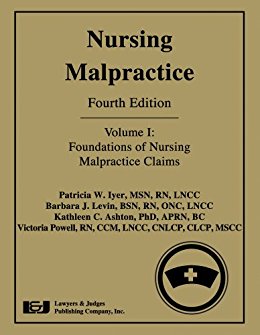Respondeat superior. Let the master answer. This is a common law term that allows employers to be held responsible for the misdeeds of their employees or agents.
And more than half a century ago, the “captain of the ship” doctrine arose in surgery. This held the supervising surgeon responsible for everything that happened in the operating room.
And because of these two premises, there has been widespread presumption that surgical trainees are immune to being named in a malpractice action. Unfortunately, this is not true! There is no law that prevents residents from being included in a lawsuit.
So how common is resident involvement in malpractice suits? What are the damages? What are the consequences? Researchers at the Mayo Clinic reviewed 10 years of data from the Westlaw online legal research database. They included all cases that involved surgical interns, residents, or fellows.
Here are the factoids:
- A total of 87 malpractice cases involving surgical trainees were identified over 10 years (!)
- 47% involved general surgical cases, 18% orthopedics, and 11% OB. The remainder were less than 5% each.
- 70% of cases involved elective surgical procedures. The most common one was cholecystectomy (6 cases).
- Half involved nonoperative decision making, and 39% involved intraoperative errors and injuries. The remainder had both components.
- Failure of the trainee to evaluate a patient in person was cited in 12% of cases.
- Lack of attending supervision was involved in 55%.
- Informed consent issues were cited in 21%, documentation errors in 15%, and communications problems in 10%
- There were twice as many cases involving junior residents compared to seniors and fellows
- Median payout to the patient (and his attorney) was about $900K
Bottom line: At first, I though this was going to be an interesting paper. But it went downhill as soon as I started to read the analysis. Yes, it scanned 10 years worth of detailed malpractice data. BUT IT DIDN’T GIVE US A DENOMINATOR! There must have been tens of thousands of surgical malpractice cases during that time period across the US. And they found only 87 involving surgical trainees!
The authors conclude that this work “highlights the importance of perioperative management, particularly among junior residents, and appropriate supervision by attending physicians as targets for education on litigation prevention.”
This is ridiculous. The mere fact that the authors do not mention the total number of surgical malpractice cases in the database over the study period (denominator) implies that they were trying to emphasize the numbers they did publish. They didn’t want to show you how low the resident numbers were by comparison. On average, 9 were involved in a lawsuit every year.
How many surgical residents and fellows are there? This is a bit hard to pin down. There are roughly 1200 categorical surgical residency spots every year. And then there are some prelim spots. Let’s add a few thousand more (wild ass guess), so that puts us at 5,000. Include orthopedics and other surgical specialty residencies? Add a few thousand more. And then fellows. Who knows? Add another thousand? (If anybody has more accurate answers, please leave a comment!)
So 9 out of 10,000+ surgical trainees get sued every year. Do we really need to set up some kind of formal education on malpractice avoidance??? Not for those numbers. Just read, see your patients, especially when they are having problems, document everything you do, and practice good handoff communications. Then worry about more important things!
Reference: Medical malpractice lawsuits involving surgical residents JAMA Surg, published online Aug 30, 2017
Related posts:


